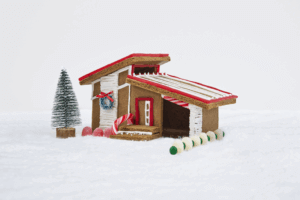Bummer Spaces . . . And How To Avoid Creating Them

You know the one. It just oozes “meh” the second you walk in. It makes your subconscious groan. You wish for a space with a little more life, something more inspired…but no. What you have instead is that thing that we in the Interior Design industry consider our villain.
What you have is a bummer space.
Bummer spaces exist everywhere. People who don’t care create them, and people who do care – people with good intentions and great resources – create them, too. And they do so all the time.
Why? We’ll get to that shortly (spoiler alert: it’s not all their fault), but first we need look at what a bummer space actually is before we diagnose what caused it.
A bummer space can feel “off” for many reasons. Maybe the design isn’t aligned with its intended function. Perhaps the lighting and finishes make you feel a bit restless. Maybe the air is uncomfortable, stuffy, or even stagnant. It could be awkward to move around in, difficult to find where to go. Maybe it gives off a liminal vibe – like it’s not quite settled into its own identity. As a result, you probably feel unsettled, too.
Whatever the reason, just existing in that space feels draining.

“Corporate accounts payable, Nina speaking. Just a mo-MENT.”
A bummer space isn’t just ugly (after all, ugly is in the eye of the beholder). It sucks both resources and joy away from its inhabitants. It doesn’t pull its weight. It doesn’t value people. It solves few problems. It consumes more than it restores.
At its best, a bummer space stands as a reminder of unmet potential. At its worst, it exacerbates the decline of atrophying and depressed institutions (and people!)
Okay, now let’s diagnose. This was actually somebody’s project once, and something clearly went wrong. After all, buildings don’t get built without human intent.
The truth is that all sorts of things may have gone wrong, and no, it most likely wasn’t that one person’s fault – at least not entirely. There were pitfalls. Budgets were tight. The program wasn’t well defined to begin with. The right people were never assigned to it. The owner was in a hurry – they needed to get that permit, get it built, get that Certificate of Occupancy ASAP. The schedule got screwed up by some stroke of bad luck. What little vision there may have been for the design was underdeveloped and under-proofed…and possibly dismissed too early. Perhaps the concept started out great but got handed down through a chain of command that sanded all the pleasing elements down until what was left was bland and uncomfortable.

See the plastic plant at the end of the hallway? Yes, even it feels uncomfortable.
These pitfalls could all be navigable, but the routes around them are not always obvious. For many decision makers on building projects, it’s not until they’re the ones in the trenches of getting a project built that they realize that what makes an interior design decision “good” or “bad” is not obvious at all. Yet, they still need to decide. The pressure is on. Others are depending on them to get this project done, and suddenly they’re feeling uncertain. Intimidated. A bit overwhelmed. It’s a big task to get a project built, after all, let alone built well.
If this describes some of your own anxieties: we see you. Take a deep breath. Let it out. We get it.
The great news is that you can avoid this fate. Here’s how:
- Enlist help. There are entire teams of humans out there who have been through this process and can guide you through yours.
- Get your team pulling on the same rope. Keep the project’s stakeholders focused on keeping the good intentions alive. Task your team with carrying that torch forward with you.
- Keep your own compass pointed north. Keep the big picture – your project’s role in the world – alive in your mind and check in with it often. Demonstrate integrity when faced with choices: do what is right, even when it’s hard.
- Be nimble. Designs evolve . . . and they’re supposed to (iteration is a feature, not a bug). Conditions will flex and change. Build yourself a team of knowledgeable allies that will help you determine which goals should change with them and which should remain.
- Finally, trust your gut. Trust the professionals, but trust your instincts, too. Pipe up when something feels off-target and be ready to work through the issues collaboratively.
As far as that last one goes, remember…you’re equipped. You know a few things instinctively already. You know your project should be a space that functions well. It should be somewhere that offers its occupants something more than just four walls and a roof. You want the people working in this place to feel like their day is smooth and energized. You know it should be delivered on time and on budget. At the end of it all, we’re betting you know you want to look back at this project with feelings of pride, confidence, and accomplishment.
We know the process is difficult. It can be overwhelming and expensive. But trust us – it can be fun, too! Watching your aspirations come to life feels great. Functional, sustainable, and beautiful spaces feel great. A well-crafted interior helps organizations feel great. It lifts the spirits of its users and contributes to a stronger, healthier community. We know this, and it drives us.

Our Mission: To enrich and inspire the human spirit through architecture in public spaces
Now comes the pitch: do you have a project? Let’s talk! Click here to get an appointment with an interior designer or architect who will chat with you about your project. If we’re a good fit, our first step will be to work with you to define your scope, then we’ll help you develop your program, breathe life into your vision, set goals and success parameters, navigate around the pitfalls, and of course: design your project to be one of the good ones. We’ll help you be the hero!



